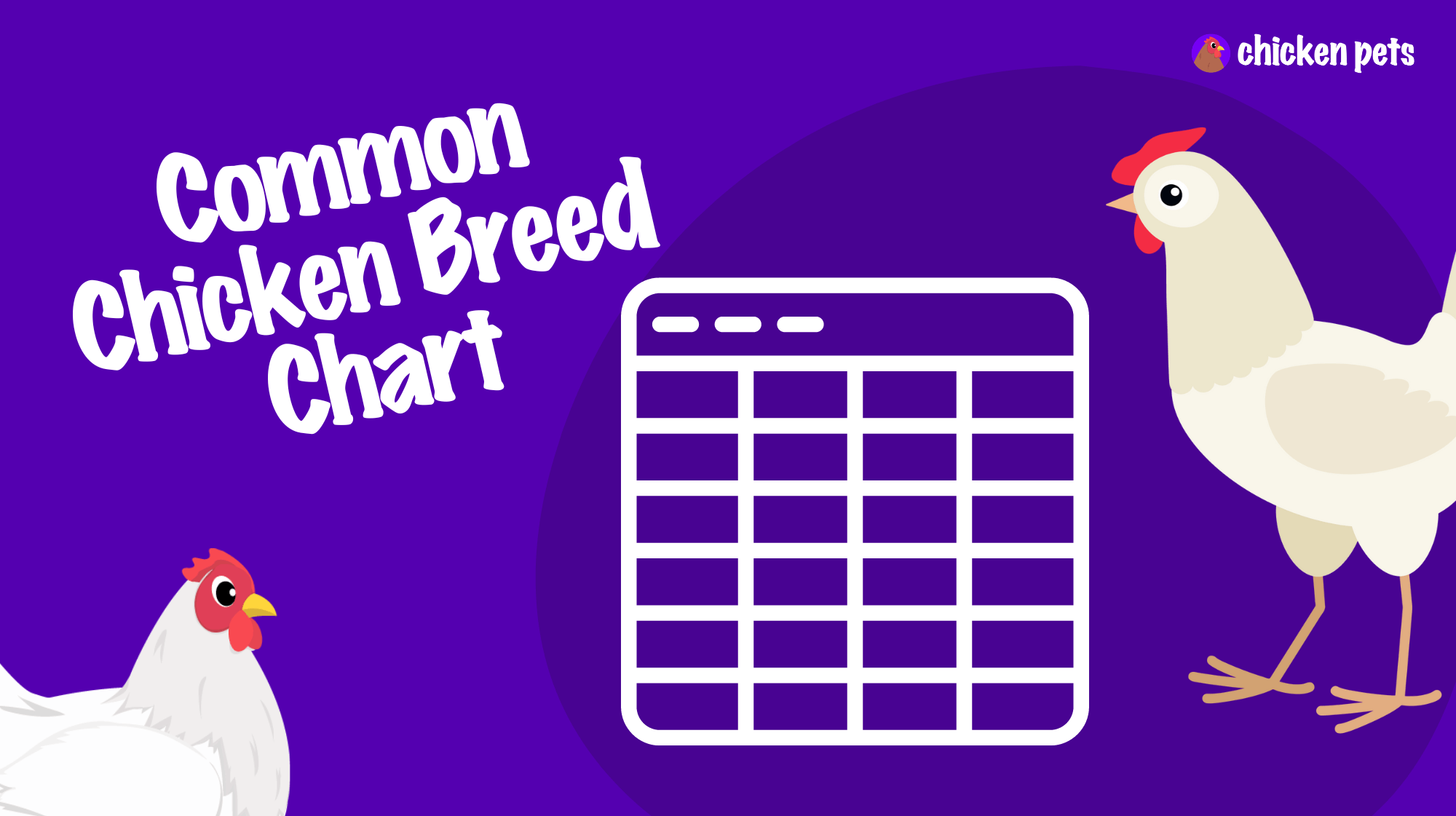Definition of Ear Lobes
In chickens and other poultry, the Ear Lobes are small, fleshy external flaps located below and slightly behind the bird’s ears. They do not have an auditory role but serve as a visual indicator of the breed, sex, and sometimes even the health of the bird. Ear lobes vary in size, shape, and color among different chicken breeds, and can be used to distinguish between them.
Importance of Ear Lobes for Backyard Chicken Owners and Enthusiasts
Understanding the relevance of ear lobes in chickens is essential for backyard chicken owners and enthusiasts because these features can provide valuable information about the bird. For instance, ear lobes are key identifiers of specific breeds, and being able to recognize the differences among them can help owners make informed decisions when selecting, breeding, or showing their chickens.
Furthermore, it is important to note that there is a correlation between the color of the ear lobes and the color of the eggs a particular chicken will lay. Hens with white ear lobes, such as White Leghorns or California Whites, generally lay white eggs, whereas hens with red or brown ear lobes, such as Rhode Island Reds or Plymouth Rocks, tend to lay brown eggs. This knowledge can be particularly useful for backyard chicken keepers who have specific preferences regarding egg colors.
By closely observing their chickens’ ear lobes, backyard chicken keepers can monitor the general health and well-being of their birds. For example, sudden changes in color or texture of the ear lobes may indicate a health issue such as an infection or infestation that requires attention. Therefore, being familiar with the appearance and significance of poultry ear lobes allows hobbyists and backyard chicken owners to better care for their flock
How Ear Lobes Work in Chickens and Poultry
Although ear lobes in chickens and poultry do not play a direct role in the hearing process, they can still provide valuable insights into the bird’s overall health and breed characteristics. The mechanisms behind ear lobes mainly involve their physical appearance and their relation to other features of the bird, such as egg color or specific breed traits.
As previously mentioned, there is often a correlation between the color of a chicken’s ear lobes and the hue of the eggs it lays. This relationship is not entirely understood, but it is a useful observation for breeders and chicken keepers who desire particular egg colors. Some poultry scientists suggest that genetics play a significant role in linking ear lobe color with eggshell pigmentation.
Additionally, the appearance and size of the ear lobes might be indicative of a chicken’s overall health. Any abrupt changes in color or texture could suggest an underlying issue. For example, a pale or shriveled ear lobe might indicate that the bird is suffering from insufficient blood circulation, stress or disease. Monitoring the appearance of ear lobes alongside other behavioral and physical traits will allow chicken owners to accurately assess the well-being of their birds and take necessary actions to maintain their flock’s health.
Practical Application for Backyard Chicken Owners
Utilizing the knowledge about ear lobes in chickens and poultry can help backyard chicken owners to make informed decisions and take better care of their flock. Several practical applications include:
- Breed Selection: Ear lobe shape, size, and color can be used to identify specific chicken breeds, helping owners choose the most suitable breed for their backyard flock based on factors such as egg production, temperament, or appearance.
- Egg Color Prediction: By observing the color of a hen’s ear lobes, owners can predict the color of the eggs their chickens will lay. This information is particularly useful for those who desire a specific egg color or want to market their eggs according to customer preferences.
- Health Monitoring: Regularly inspecting the ear lobes for any changes in appearance or texture helps owners monitor their flock’s health. Unusual changes may indicate stress, disease, or malnutrition, which may require further investigation and medical intervention.
- Exhibition Preparation: Chicken owners who participate in poultry exhibitions can use ear lobe characteristics as a factor in selecting and showcasing the best specimens of their breeds. Some competitions judge birds on the basis of standard features, including ear lobes, to determine health and conformity to breed standards.
By understanding the significance of ear lobes in chickens and poultry and applying this knowledge, backyard chicken owners can optimize their breeding decisions, improve the health and happiness of their flock, and foster a more balanced and thriving backyard poultry environment.
Tips & Recommendations for Chicken Ear Lobes Care
Proper care and attention to a chicken’s ear lobes can contribute to the overall health and productivity of your flock. Here, we share practical advice and best practices for optimal ear lobe care in chickens and poultry:
- Regular Inspection: Develop a routine to visually inspect your chicken’s ear lobes for any unusual changes or abnormalities. This allows you to quickly identify potential health issues, stressors, or infestations that may require treatment.
- Cleanliness: Keep the chicken coop and surrounding environment clean and well-maintained to minimize the risk of infections or parasites affecting your birds’ ear lobes. This entails regular cleaning of bedding, proper ventilation, and routine checks for pests.
- Avoid Stress: Stress can lead to various health issues, including changes in ear lobe appearance. To minimize stress, ensure that your chickens have adequate space, a reliable daily schedule, and sufficient resources in terms of food and water.
- Disease Prevention: Maintain a strict biosecurity plan to reduce the risk of disease transmission in your flock. This includes limiting exposure to wild birds, properly storing feed and bedding, and diligently monitoring the health of your chickens.
- Know Your Breed: Familiarize yourself with the specific breed characteristics of your chickens to better understand their unique ear lobe features. This knowledge will ensure that you have realistic expectations about the appearance and nature of their ear lobes.
- Veterinary Assistance: If you observe any unusual changes or signs of infection on your chickens’ ear lobes, consult a veterinarian with poultry expertise. Early diagnosis and treatment of potential health issues can contribute to the well-being of your birds.
By following these tips and recommendations, you can maintain the health of your flock’s ear lobes, contributing to the overall well-being and productivity of your chickens.
Additional Information on Ear Lobes in Chickens
While we have covered various essential aspects of ear lobes in chickens and poultry, there is some additional information that might prove valuable to backyard chicken owners and enthusiasts:
- Absence of Ear Lobes: Some rare chicken breeds, such as the Araucana, may lack prominent ear lobes. When assessing the health or breed of such birds, keep in mind that their earlobe-like features may look different compared to other breeds.
- Pendulous Ear Lobes: A few chicken breeds, including Houdans and Crevecoeurs, have large, pendulous ear lobes. While this feature is considered unique to these breeds, proper care and monitoring for any health concerns are still crucial.
- Split Ear Lobes: This atypical feature, where an individual ear lobe appears divided into two, can occur in certain breeds, like Sumatras or Langshans. In these cases, it is not a sign of ill-health but rather a breed-specific characteristic. However, if a split ear lobe is observed in a breed where it is uncommon, consult a veterinarian or poultry expert to verify if it is a genetic abnormality or health issue.
- Earlobe Pigmentation in Silkies: The Silkie chicken breed exhibits unique ear lobe pigmentation. Often referred to as “mulberry”, their ear lobes appear a combination of blue, purple, and black colors. Recognizing this coloration as a breed characteristic rather than a health concern is vital for Silkie enthusiasts.
By considering these additional pieces of information, backyard chicken owners and enthusiasts can better understand, care for, and appreciate the diverse world of chickens and poultry, ensuring that the unique features of each breed are recognized and valued.
Frequently Asked Questions about Chicken Ear Lobes
Chicken enthusiasts and backyard poultry keepers may have several questions related to ear lobes in chickens. Below, we address some of the most frequently asked questions to provide clear and concise information:
1. Can you determine a chicken’s sex by its ear lobes?
While ear lobes can help identify different chicken breeds, they are generally not reliable for determining a chicken’s sex. To sex chickens, look for other characteristics such as comb size, feather color patterns, body shape or the presence of unique features like spurs in roosters.
2. Do all chicken breeds have ear lobes?
Yes, all chicken breeds have ear lobes, but their size, shape, and color can vary significantly among different breeds. Some breeds, like Araucanas, may have less prominent ear lobes, while others, like Houdans, may have pendulous ear lobes.
3. Can ear lobe color change over time?
In some cases, a chicken’s ear lobe color might change due to factors such as aging, illness, or environmental conditions. If a chicken’s ear lobe color shifts suddenly, it could indicate a health issue or stressor that needs attention.
4. How do I clean my chicken’s ear lobes?
Under normal circumstances, chickens keep their ear lobes clean through grooming. However, if your bird has an ear infection or build-up of debris, consult a veterinarian for guidance on cleaning their ears properly and safely.
5. Are chickens born with ear lobes, or do they develop them as they grow?
Chickens are born with ear lobes, but the size, shape, and color of the lobes may continue to develop as the bird grows and reaches maturity.
6. Why do some chickens have uneven or asymmetrical ear lobes?
Asymmetrical ear lobes can be a result of natural variation or a genetic trait specific to certain breeds. They might also indicate injury or other health issues. If you are concerned about asymmetrical ear lobes, consult a veterinarian or an experienced poultry expert for advice.
7. Are there any breeds with distinctive ear lobe colors?
Yes, Silkie chickens have distinctively pigmented ear lobes, often referred to as “mulberry.” Their ear lobes exhibit a combination of blue, purple, and black colors. This pigmentation is a unique breed characteristic.










